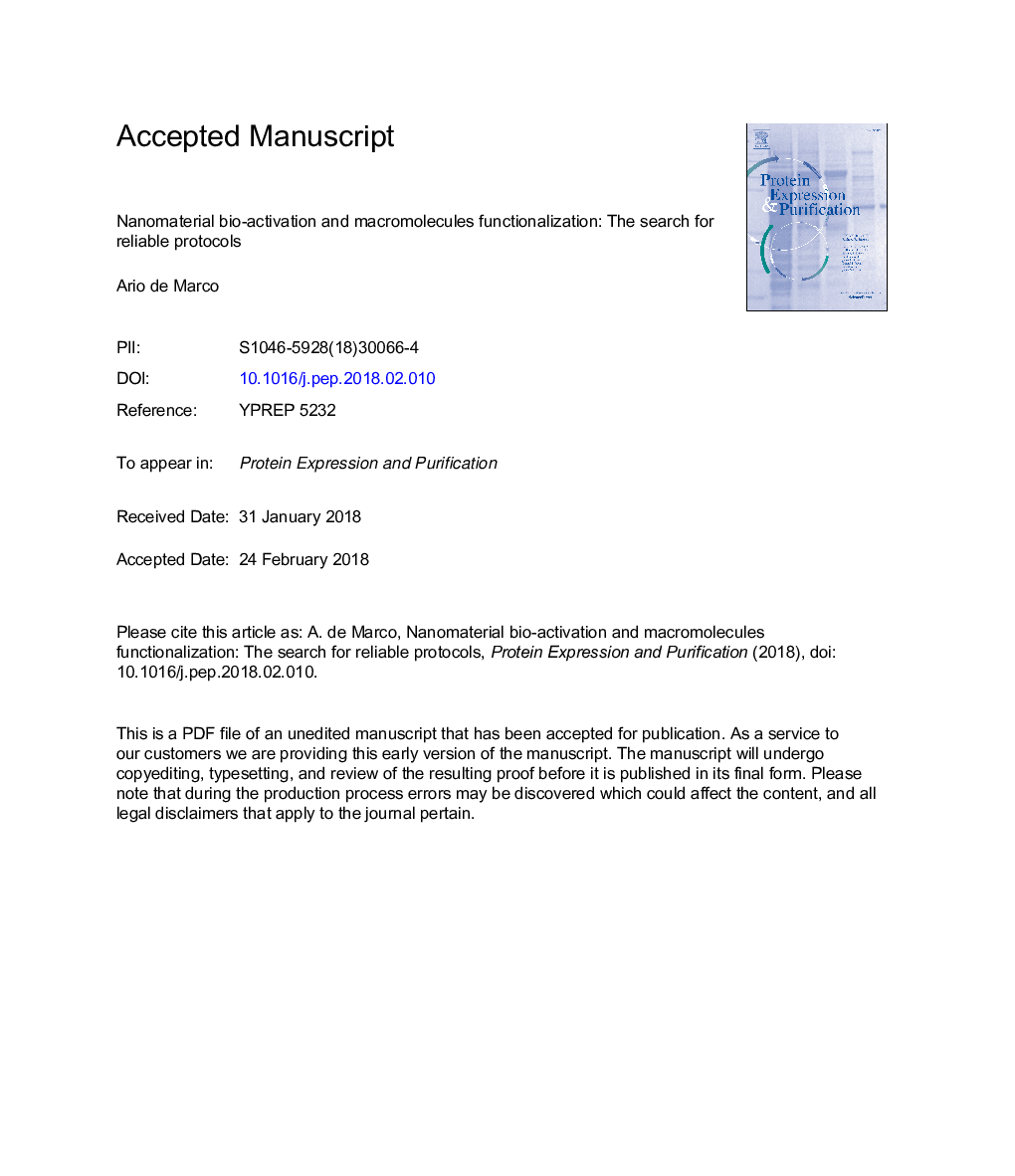| Article ID | Journal | Published Year | Pages | File Type |
|---|---|---|---|---|
| 8359451 | Protein Expression and Purification | 2018 | 25 Pages |
Abstract
The possibility of successfully applying nanomaterials such as biosensors or nanoparticles in diagnostics and therapy is critically dependent on the capacity to optimize their target recognition selectivity and their ability to be delivered minimizing off-side accumulation. Biological macromolecules possess the necessary specificity and for this reason have been often coupled to nanomaterials. However, such process is not straightforward because it often induces structural alterations of the involved macromolecules, in most of the cases proteins or antibodies the functions of which can be hampered when single amino acids are modified. Several strategies have been proposed to rationalize the methodology of macromolecule functionalization with reactive groups and tags that should improve the nanomaterial bio-activation in terms of final yields, process simplicity and reproducibility, and cost-efficiency. This review will describe the features of both chemical and enzymatic reactions exploited to activate polypeptide residues as well as some of the strategies suitable for preparing recombinant proteins fused to tags directly accessible for nanomaterial modification.
Keywords
Related Topics
Life Sciences
Biochemistry, Genetics and Molecular Biology
Biochemistry
Authors
Ario de Marco,
